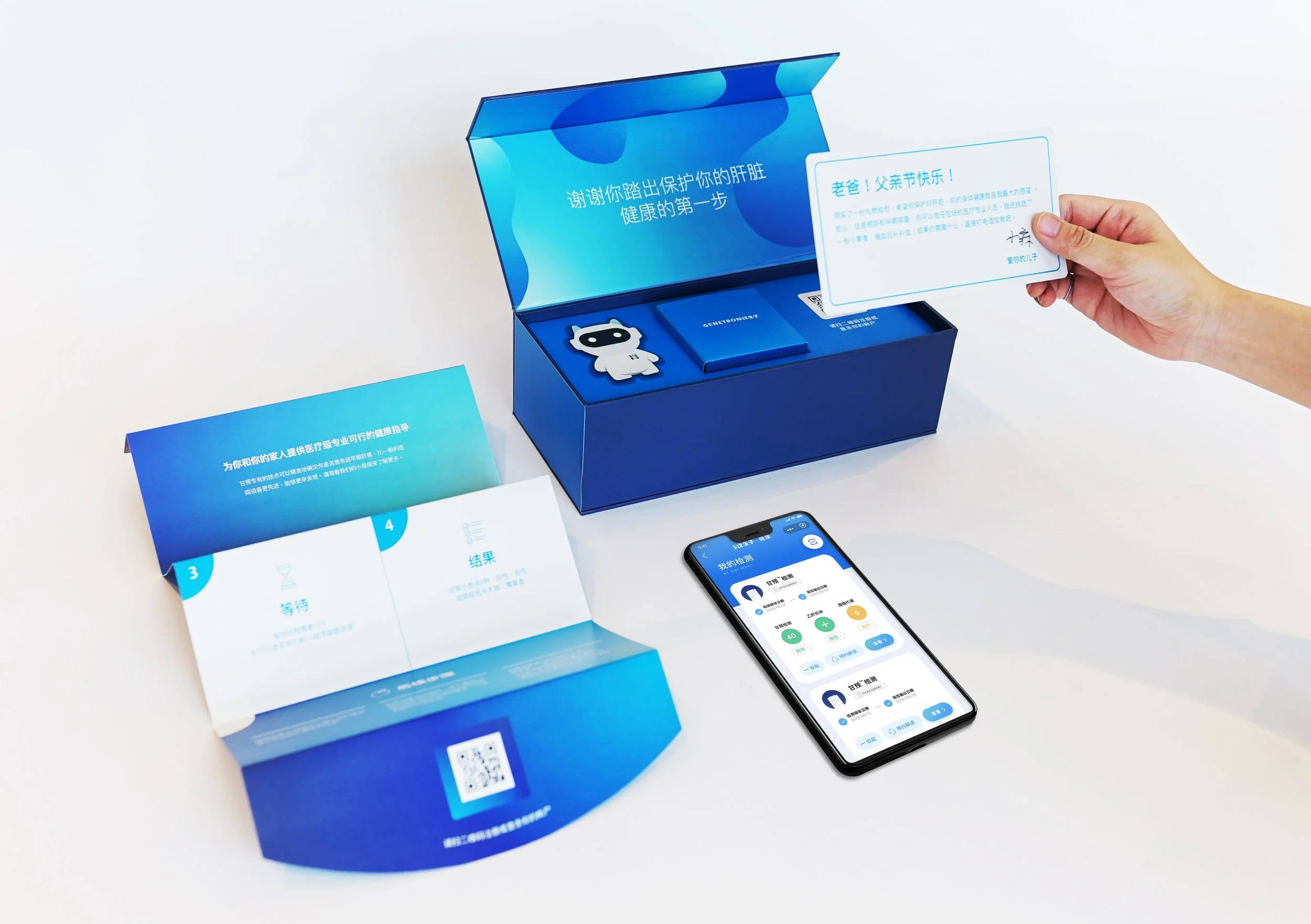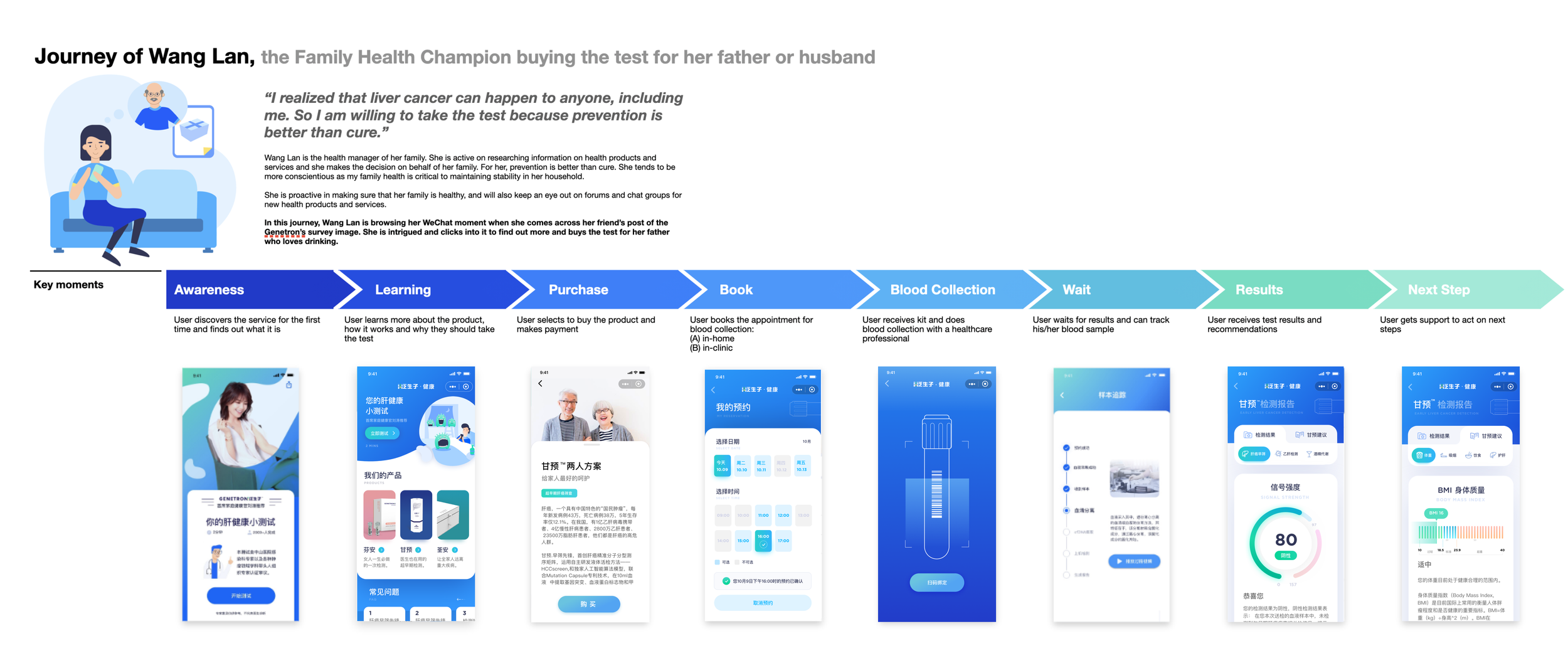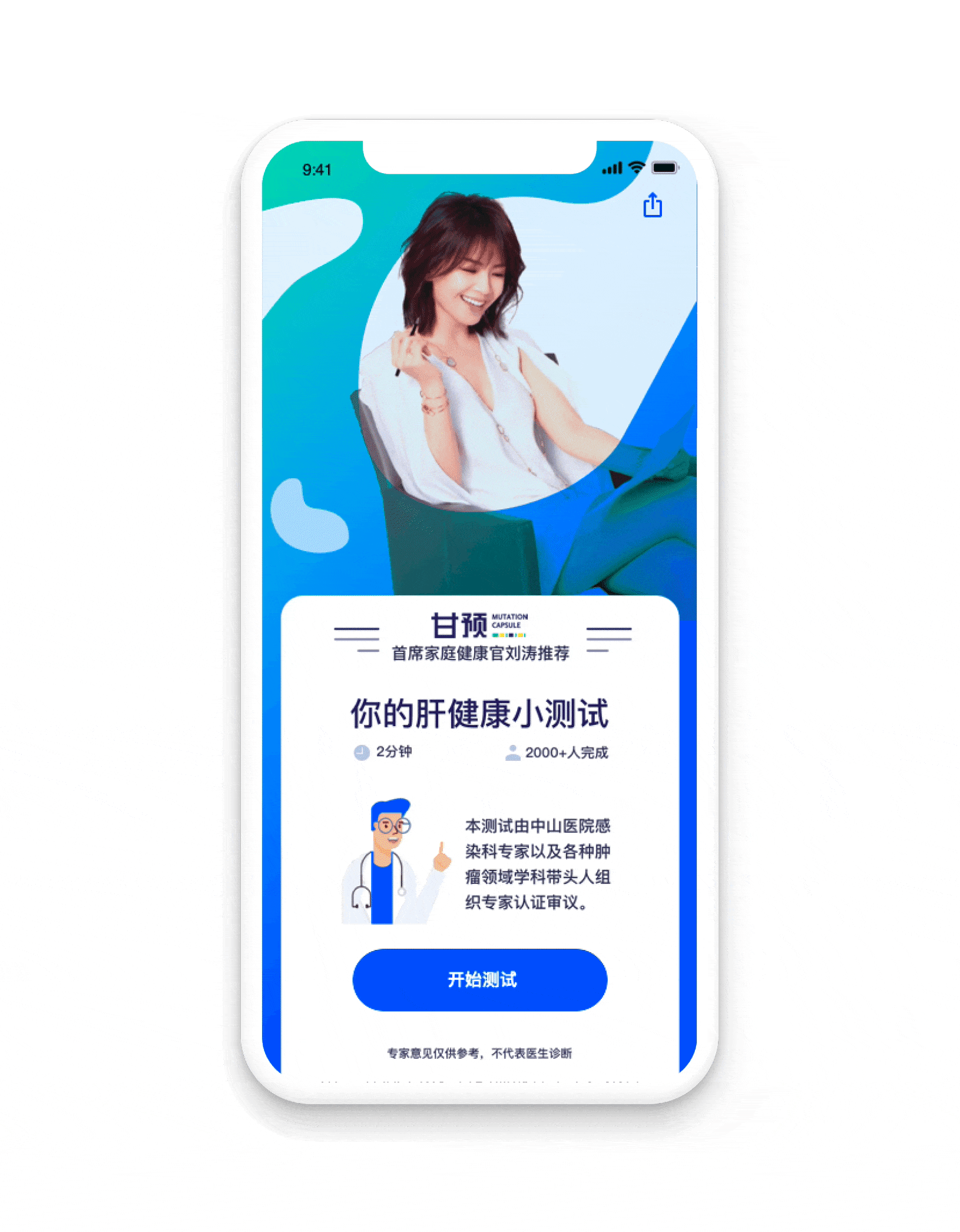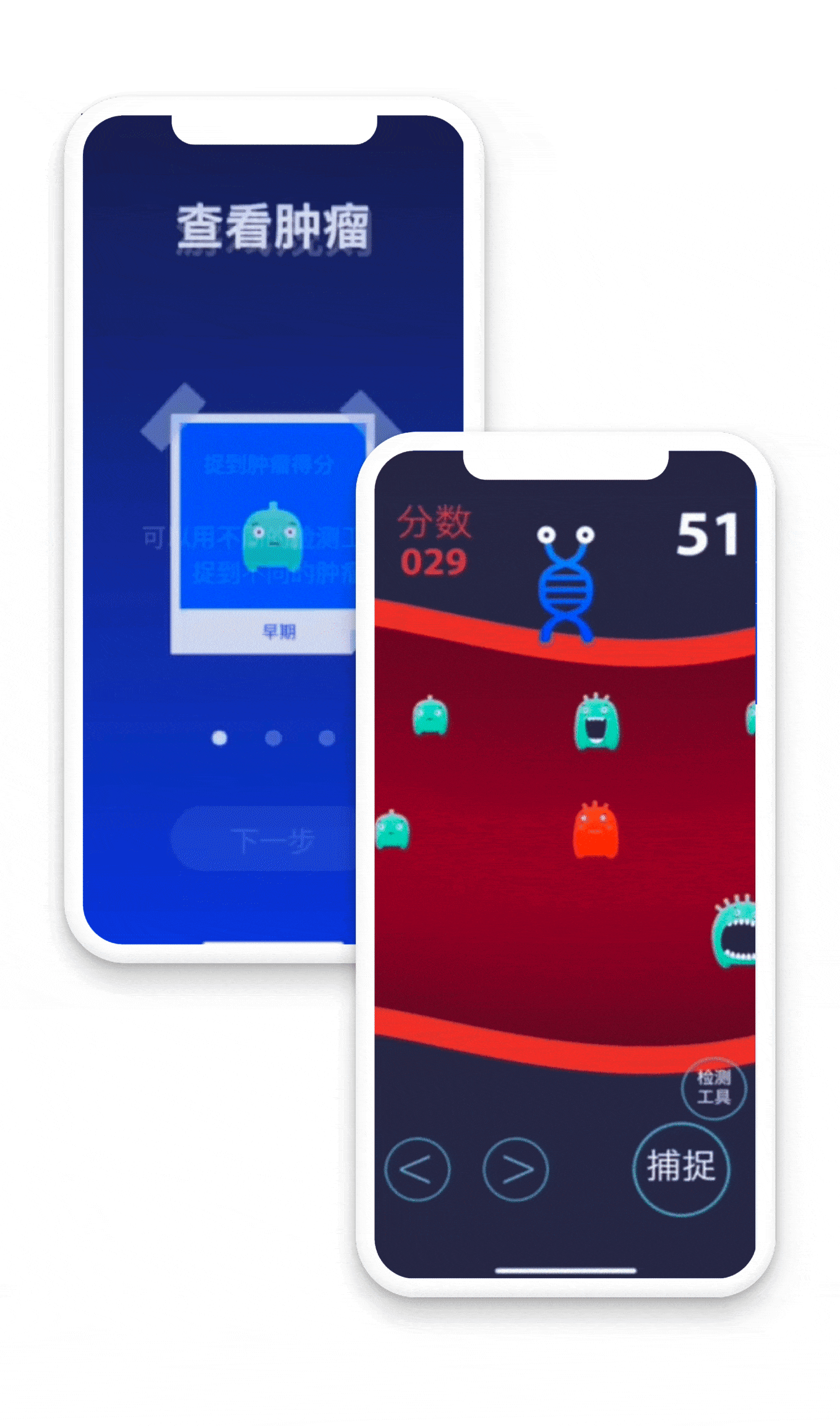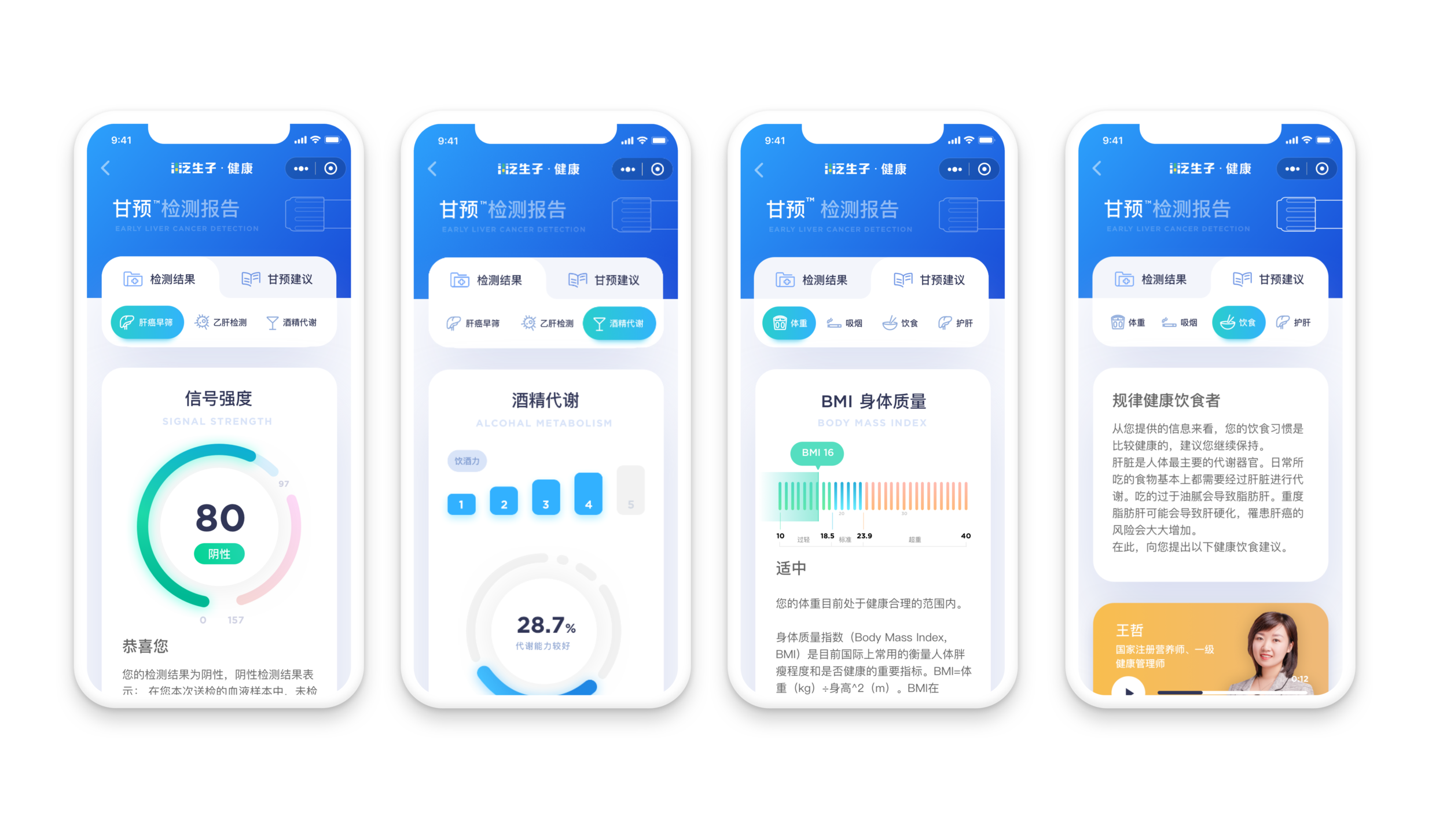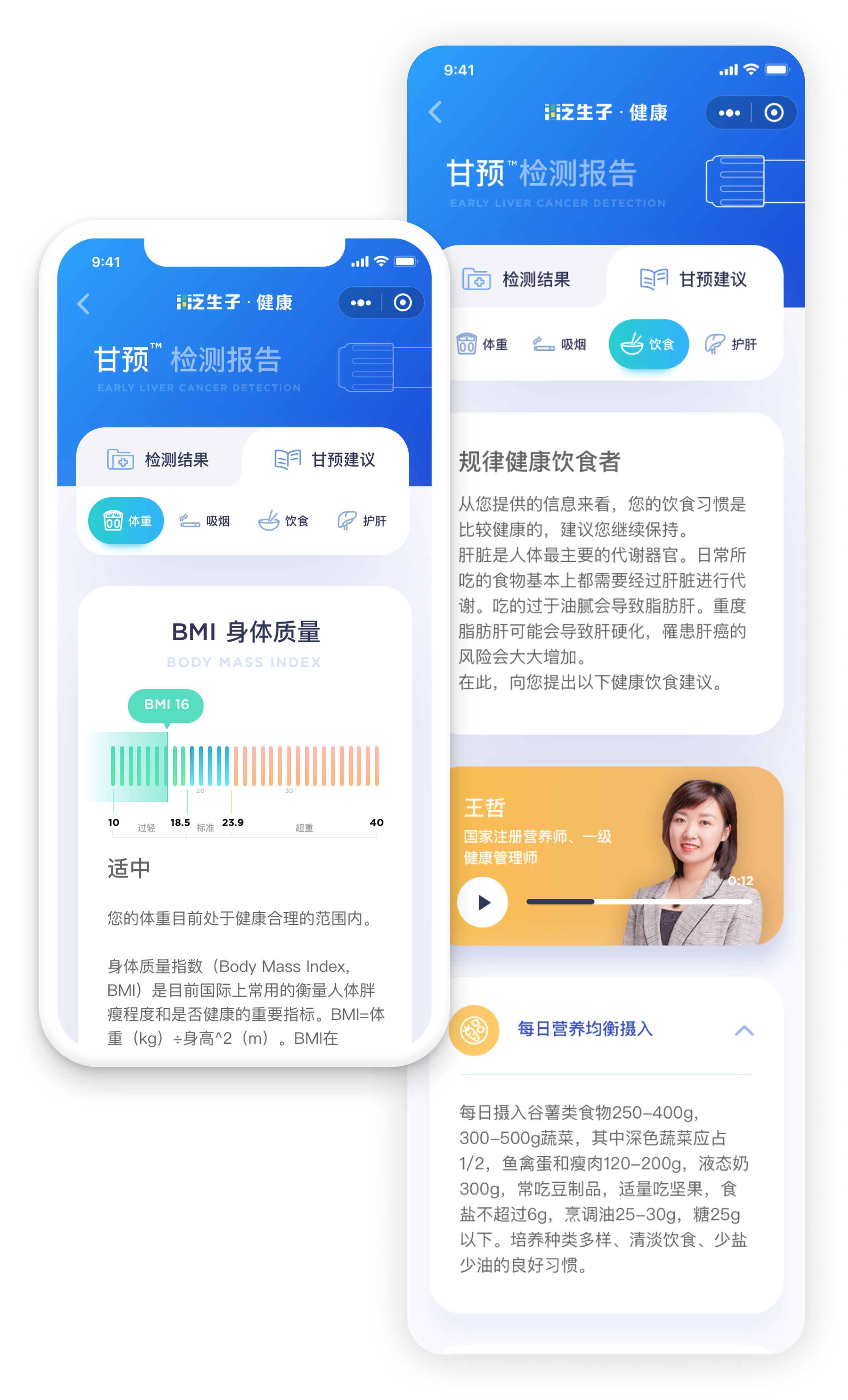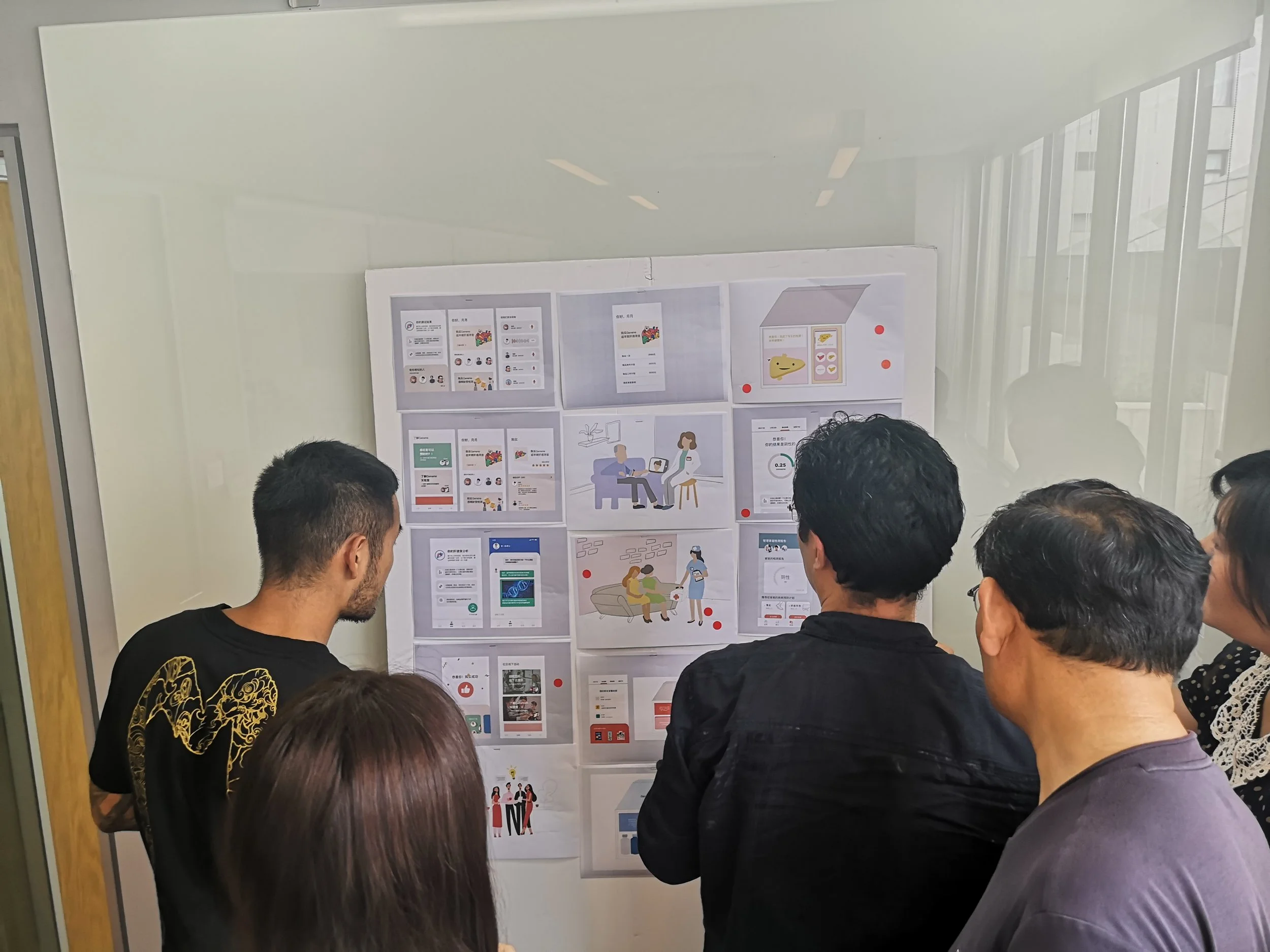Designing an end-to-end early liver cancer detection service
Duration: Apr 2019 - July 2019 | Role: Lead designer, Interaction designer, User research
The team was tasked to design an end-to-end user-centered liver cancer early detection experience that will differentiate the brand in China as well as to help people learn more about genetic tests and encourage them to get tested. The outcome includes a differentiating value proposition and an End-To-End service that was designed with 3 different touchpoints: the online and offline advocacy to help people to learn, an in-home testing kit and nurse kit, and a digital app that supports the user along the whole journey.
Background
In China, liver cancer is the second major cause of cancer deaths, with a mortality rate of 26.26 per 100,000.
Most people find liver cancer when it’s the late stage, which only has a 10% survival rate.
“谈癌变色” Cancer is often a taboo topic in Chinese culture, even just talking about it can be seen as unlucky.
Final Outcome
A differentiating value proposition
One of the outcomes of the project is a clear value proposition that differentiates the brand from other genetic test companies. The research helped us to define the product value proposition as:
Clinically, actionable for you and your family
End-to-end liver cancer early detection service design, from 0-1
We designed an end-to-end service including 3 different user journeys which uncover 3 different user personas. I was in charge of designing the digital platform that supports the user along the whole journey. At the end of the project, we handed over the design to the digital partner for further design and development. The product MVP has been launched in Dec of 2019, in order to help diagnose millions of users.
Snapshot of the interface design
One of the user journey with online/ offline touchpoints
App Architecture
I design the whole digital mini-program including IA, UX layouts, key flows, and UI visual elements. I also coordinated the digital agency from early phase of the project. And continuously help them to design and develop the product.
Branding for Digital Products And In-home Testing Kits
The visual identity is consistent with the value proposition. I provided guides for 2 visual designers to identify the visual identity for both the digital product and the physical kits.
Based on the visual identity, we designed the physical in-home testing kit that people will receive after ordering online. It is personalized and shows Genetron is a company that gives care to both you and your family. We also designed the physical nurse kit. The nurse will bring it to the patient’s home. We took into consideration its visual design as well as its experience of usage. It expresses Genetron's professionalism and its clinical heritage.
